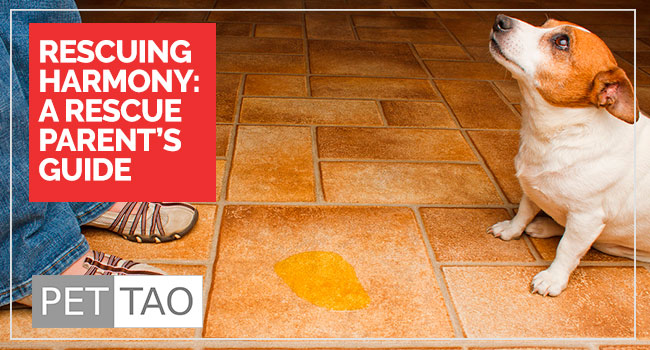My rescue pet has odd habits. Spike is afraid of tall men and motorcycles. He chews on furniture, sometimes.
I think Spike likes the taste of wood. He’s a house-trained dog but will tinkle when he is in a new environment. My rescue pet is one-of-a-kind!
I love him and we have a great relationship. But, when I first adopted Spike, I didn’t know how to console or discipline my rescue dog.
It took almost a month for Spike to show me his personality, and even longer before we were comfortable together. All rescue pets need a special time, attention, understanding, and love – not just Spike.
Once you and your family are ready to adopt a rescue dog, prepare your home for the new arrival.
Complete These Steps Before Move-In
Choose Your Pup’s Main Hangout
Decide where the pet will spend most of his time. Will your new pup sleep in your bedroom or a crate? Will he spend most of his day in the yard or the family room?
Dog-Proof Other Interesting Areas
This may include:
- Hiding cords indoors
- Covering outlets indoors
- Securing fences outside
- Checking for poisonous plants outside
Your Pup’s First Day in His New Home
Expect Nervousness
The pup may seek places to hide or exhibit a lack of appetite. Be patient, and allow his personality to unfold. Place his bed and some toys in an out-of-the-way spot where he can still see and hear you, but from a slight distance.
Limit Indoor Roaming
Even if he’s a house-trained pup, he needs time to get used to his new surroundings. Is the pup crate trained? If not, do you plan on crate training? Know some rescue dogs are afraid of enclosed spaces and may not respond well to crate training.
Provide an ID Tag
You want to prepare in case he runs away.
Strangers Can Wait
You will want to show him off and introduce him to your neighbors, but give him a few days to settle in. Even if you have a house-trained pup, bring him outside to relieve himself often during the first few days in his new home.
Your Pup’s First Few Weeks in His New Home
Be Consistent
Create universal household rules and commands.
For example, everyone in your household must agree on whether you allow the pup on the couch.
Think About Unforeseen Reactions
Even if your pup is calm and sweet the day you bring him home, prepare for potential personality changes.
Your pup may be afraid of the doorbell, coffee grinder, or vacuum.
Some rescue animals are afraid of brooms, rolled-up newspapers or other objects used to abuse them in the past.
Have patience and give your pup time to relax in his new environment.
Create a Routine
Your pup needs structure to help ease him into his new life.
Create routines, such as standard walk and feeding times.
Walks will allow you and your new pup to bond.
Introduce Toys and Treats Slowly
You will want to spoil your pup as soon as he arrives.
However, his stomach isn’t used to treats, and he may not know how to play with toys.
Introduce toys and treats slowly, one at a time.
Keep Your Rescue Pup on a Leash
Until you get to know and trust your pup, keep him on a leash.
He needs to become familiar with your neighborhood and trusting of your commands.
His Personality Will Unfold
For the first several weeks your new pup is getting to know you. He is acclimating to his new environment and your new routine.
He may be shy, scared or defensive for the first several weeks. It will take some time for him to relax and feel comfortable in his new home. He also needs to trust you.
Consider Hiring a Trainer
Even if your pup is middle-aged or older, a trainer can help you and your new pet communicate.
Trainers teach you and your new pet to communicate effectively through physical and verbal cues, as well as body language.
Have you recently adopted a rescue pet?
What were the biggest obstacles?
- Housetraining
- “Puppy biting”
- Hiding/antisocial behavior
- Chewing








